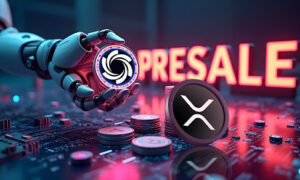According to the report published by The Brainy Insights, the global train battery market is expected to grow from USD 498 million in 2021 to USD 779.2 million by 2030, at a CAGR of 5.1% during the forecast period 2022-2030. The Asia Pacific region emerged as the largest market for the global train battery market, with a 38% share of the market revenue in 2021. Asia Pacific region has the presence of countries with the largest railway networks, namely India and China, which propels the market’s growth. Furthermore, the rising demand for passenger trains in developed and developing countries like China and India also adds impetus to the market’s growth in the region.
Global Train Battery Market Size By Product Type (Nickel-Cadmium, Lead Acid, Lithium-Ion, Others), By Locomotive (Electric, Diesel, Hybrid), Application (Train Lighting, Engine Starting, Electric Locomotive, Train Air conditioning, Railway Signalling, and Telecommunications), Regions, Global Industry Analysis, Share, Growth, Trends, and Forecast 2022 to 2030
Leading companies in the industry include Exide Industries, EnergySys, Saft, GS Yuasa Corporation, Amara Raja Batteries, Hitachi, CRCC Corporation Limited, Stadler, and Hyundai Rotem, among others which are offering more significant opportunities and are continuously focused on new product developments and venture capital investments to obtain market share.
The product type segment of the train battery market is divided into lead-acid, nickel-cadmium, lithium-ion, and others. The lithium-ion battery segment dominated the market, with a market share of around 32% in 2021. Lithium-Ion batteries are maintenance-free and offer battery health tracking, which drives the segment’s growth during the forecast period. The locomotive segment is divided into diesel, electric, and hybrid. Over the forecast period, the hybrid locomotive segment is expected to grow at the fastest CAGR of 6.8%. Hybrid trains use diesel and batteries to provide efficient services to customers, such as emergency braking, train lighting, train air conditioning, connecting pantograph, railway signaling, and telecommunications, which drives the segment’s growth. The application segment is divided into train lighting, air conditioning, electric locomotive, railway signaling and telecommunications, and engine starting. In 2021, the train lighting segment accounted for the largest share of the market, with 23% and market revenue of 114.5 million. Train lighting requires batteries in large amounts to fulfill the increasing demand for rail networks which drives the segment’s growth during the forecast period.
The rising urbanization and rapid expansion of rail networks globally are anticipated to increase the demand for train batteries during the forecast period. However, the outbreak of the Covid-19 pandemic affected the market’s growth as several manufacturing units were put on hold temporarily to stop the spread of the disease. The railway’s systems are making many advancements, such as improved passenger experience, proper optimization of field equipment like ACs, heaters, braking systems, resource planning, and decision-making which is expected to provide an opportunity for market growth during the forecast period.
Get Sample PDF Brochure, Click Here



































